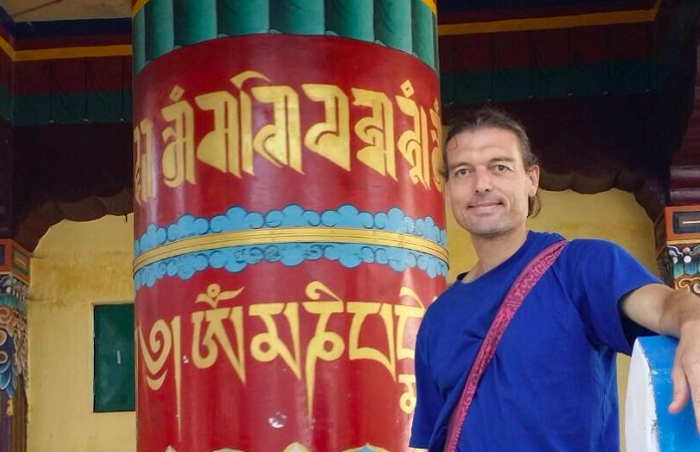I am constantly getting creative ideas (that I think would make a great book or article or even screenplay), but then I doubt them and do not pursue them.
I look at maps and conjure up fantastic journeys in my mind, which look doable and meaningful, but these suffer the same fate.
Or I think of what might turn an original day out with a nephew or niece into an unusual and beautiful date, but these ideas go no further either.
The closest I’ve gotten to a mantra (that I can actually remember) would be, “This is so imaginative and creative, and only I can do it this way.” A mantra lasts three days, according to the British explorer Sir Ranulph Fiennes.
Apparently, explorers use these affirmation-like tools a fair bit, but making your own is supposed to be best.
Let us suppose you’ve set out to ski solo (unaided to the poles), and let’s suppose the weather becomes a tad nippy, perhaps somewhat unpleasant, or, why not, unimaginably harsh.
Now I may be wrong, but I think in such conditions we may feel just a fraction less upbeat than in normal circumstances, perhaps not quite our usual selves. Enter the motivational mantra (the short, succinct sentence or the magic words we play on a loop in our head), in order to stay focused and remain steadfast.
But even then in spite of the cold, which preserves other commodities almost indefinitely, it seems a mantra’s freshness only lasts three days. After a night’s sleep, the initial brilliance of the words begins to fade. Use a mantra for a day and the effect starts to lose its edge. Another sleep and another day, and the power is waning—the mantra gradually becomes depleted.
And after three days, we need a completely new one—or a helicopter rescue home. But even lesser mortals, such as myself, find self-motivational words useful.
While not all would agree with Sir Ranulph’s estimate of a mantra’s lifespan (perhaps in less extreme conditions they are reusable for longer), far more modest undertakings than polar expeditions can still give rise to self-doubt, anxiety, concern, and other thoughts and emotions that are a threat to our peace of mind or, at times, even to our sanity.
In difficult situations, I have often thought, for example, of the words of Eileen Caddy:
“You are never asked to do more than you are able without being given the strength and ability to do it.”
Or when unsure I can succeed at something more humorous like that of Mark Twain:
“To succeed in life, you need two things: ignorance and confidence.”
When impatience overcomes me, I remember the Indian saying:
“When God created time, she made plenty of it.”
And those of Rich Roll:
“Stop trying so hard to find shortcuts to ‘hack’ your life. The best things are hard.”
But I digress. “Or I digest,” as Ali G. would say, and in fact, the two are not entirely dissimilar because a digression or distraction is sometimes the best break to allow us to absorb and process a great truth.
The point is (about the three days), I have found Sir Ranulph’s mantras to have a lot in common with creative ideas. However brilliant or inspiring they may be, these too often rapidly lose their spark.
Unless your survival depends on focusing every last iota of your concentration and energy on the goal, the killer mantra is not always your best friend. It is both impossible and undesirable to try and keep our, so-called, negative emotions at bay forever.
In order to connect with our true inner strength, there is no alternative but to make friends with our shadow and self-sabotaging inner tendencies that cause us trouble.
However big our inner demons, however recurrent the patterns that drag us down, we resist them (or worse, make them into enemies) at our own peril.
We might want to keep our hearts and mindset open if we want to create achievements or change in our lives. The way to do it is by not trying to control what we let into our innermost space, nor to try and seal that same space off to keep pests out.
This obviously doesn’t mean we start embracing all the things that pull us down and decide to grudgingly accept them as inevitable bedfellows. But it’s generally easier to get on with troublesome neighbors if we allow them their space, rather than constantly give them the cold shoulder, radiate ill-will, and make them feel that they are absolutely not welcome.
A student once asked a Zen master, “Master, what would you do if you realized you were worried?” To which the wise old nut responded, “Well, I would agree.” Do not fight what is, don’t wish you were feeling otherwise, is what he meant.
The Tibetans call such an attitude inviting your demons in for tea. Stop trying to choose your visitors at all costs. It is my experience that many turn out to be paper tigers. And wisdom from closer to home recommends that we know our enemy.
The two are not entirely dissimilar because a digression or distraction is sometimes the best break to allow us to absorb and process a great truth—about three days. I have found Sir Ranulph’s mantras to have a lot in common with creative ideas. However brilliant or inspiring they may be, these too often rapidly lose their spark.
How many beautiful works or undertakings have never seen the light of day because we never acted upon the creative impulse?
Perhaps because we were too lazy or because we thought that although the idea seemed great on the spur of the moment, it probably wasn’t actually worth much.
And, after a few days, that’s exactly how we feel, which confirms we were right. Except if it doesn’t and confirms only that we will now never find out.
Next time a beautiful idea arises, especially if it comes utterly unexpected and most emphatically, seize it on the wing. Have your tea first, if you must, but don’t sweep it under the carpet or file it under ideas to revisit.
Remember, that spark of inspiration—like the mantra—may only last three days.
~












Read 2 comments and reply